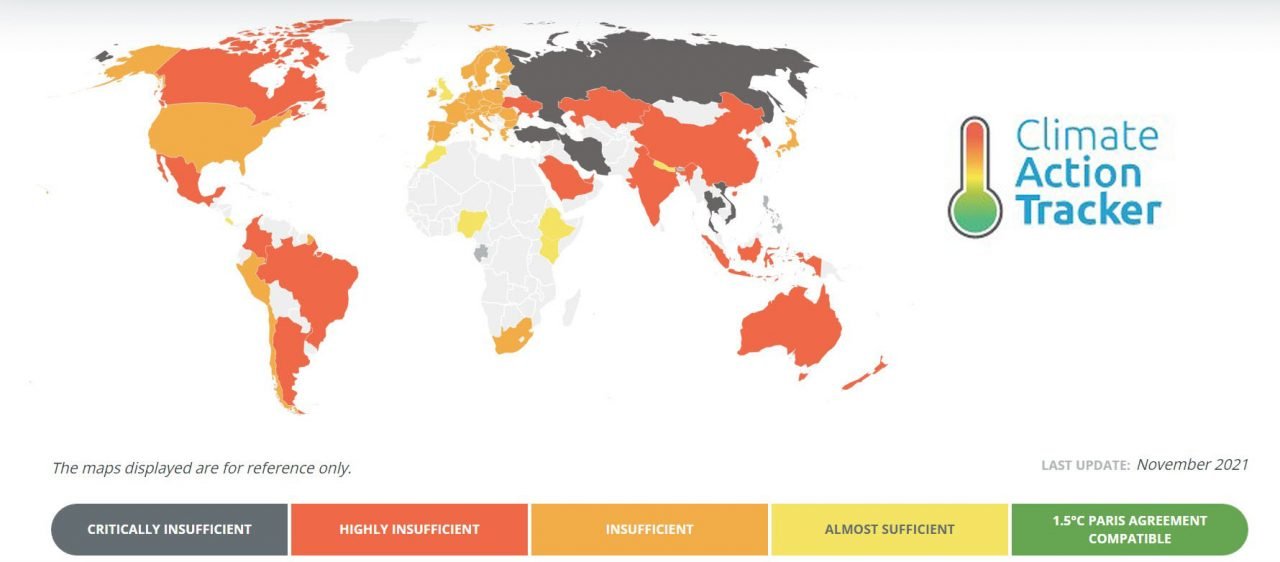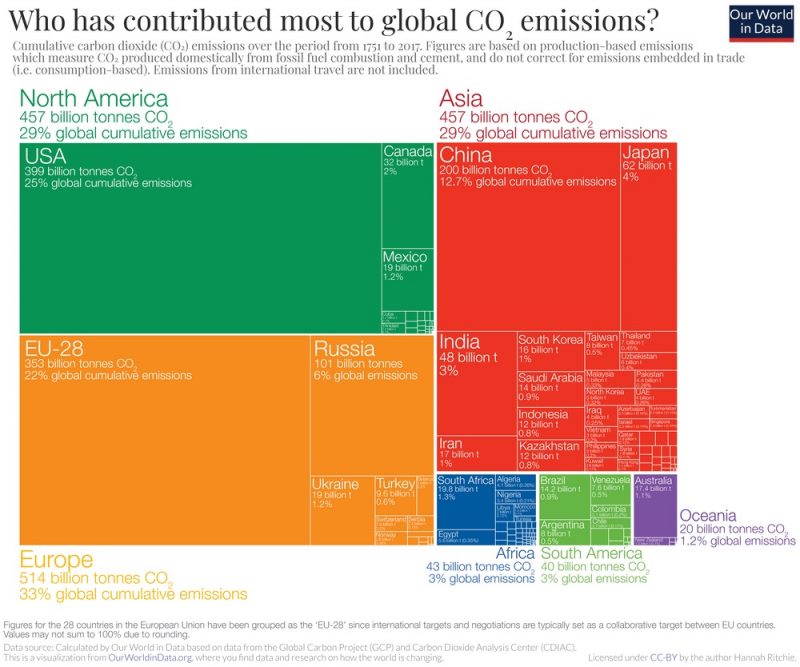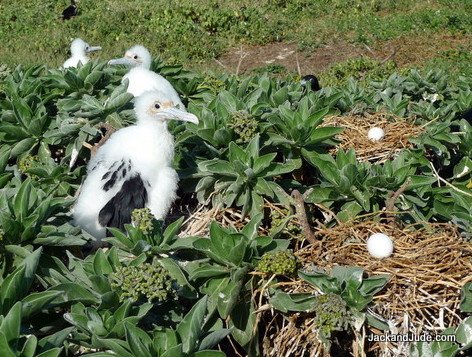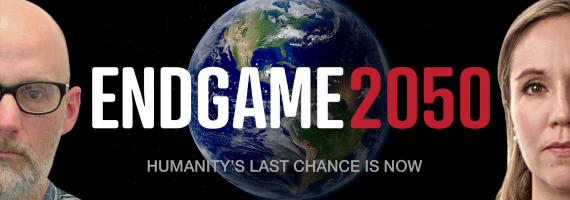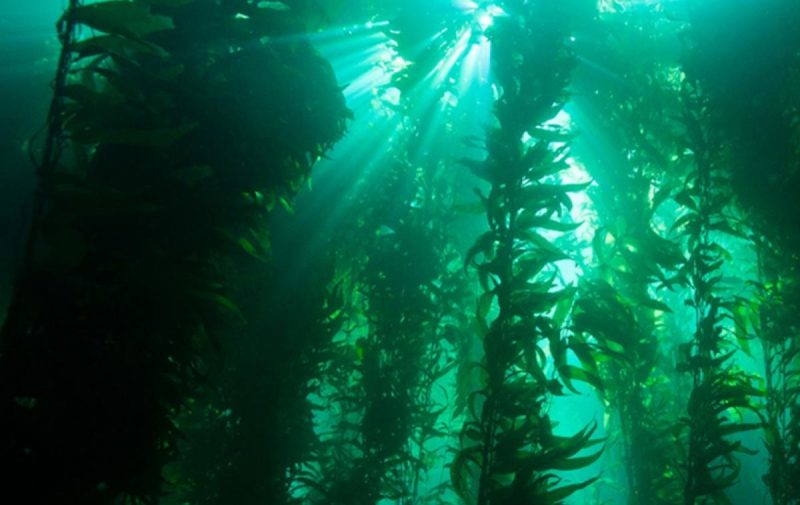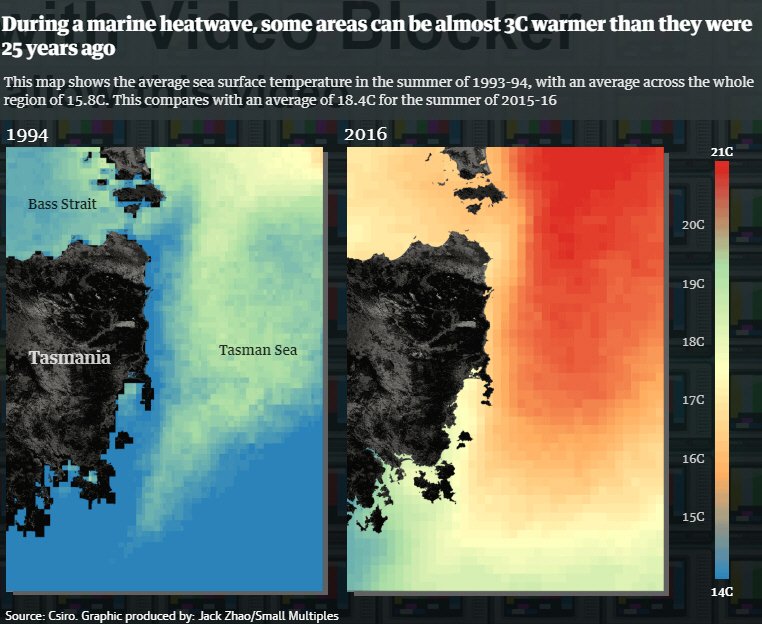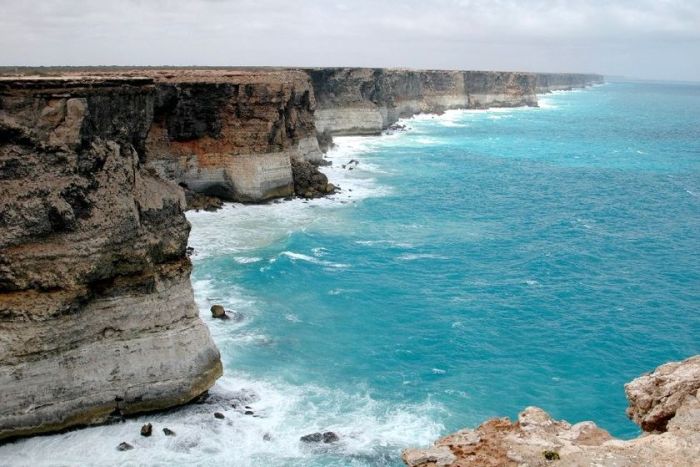On this Page:
- Wealthy countries achieve minimal social gains by putting planet at risk – 25 Dec 2021
- Elon Musk is Wrong – We Need Smaller Families – 13 Dec 2021
- The worst possible news – Rowley Shoals to be Attacked by Sonic Blasts – 23 Dec 2021
- Billionaire Uses Massive Oil Spill to Avoid Paying Taxes for 14 Years – 9 Dec 2021
- Ending the Coal Trade – 26 Nov 2021
- Political Promises and Lies – 19 Nov 2021
- A Glimmer of Hope – 13 Oct 2021
- Koalas – Are We Plain Stupid or Just Full of Ourselves? – 21 Sept 2021
- Glasgow climate talks – Will Australia try to BARGAIN? – 13 Nov 2021
- Tasmanian Salmon is One Big Lie – 26 Apr 2021
- “The Great Barrier has gone from poor to very poor.” – 23 Jun 2021
- Our population has become so large that the Earth cannot cope – 1 Jun 2021
- Seabirds are today’s canaries in the coal mine – 28 May 2021
- Oceans at a crossroads – 28 May 2021
- Population Matters VIDEO – Endgame 2050 – 4 Feb 2021
- Suing for climate action – 15 Nov 2020
- The Great Barrier Reef Has Lost Half Its Corals – 14 Oct 2020
- Net loss: the high price of salmon farming – 15 Sep 2020
- New penguin colonies in Antarctica spotted from space – 5 Aug 2020
- Aggressive seaweed threatens Hawaii’s remote reefs – 7 July 2020
- The Dead Sea of Tasmania – 24 feb 2020
- FISH FARM TRASH – Update
- Equinor pulls out of the Great Australian Bight – 24 Feb 2020
For the last 30 years,
No country has met basic social needs
Without putting planet further at risk
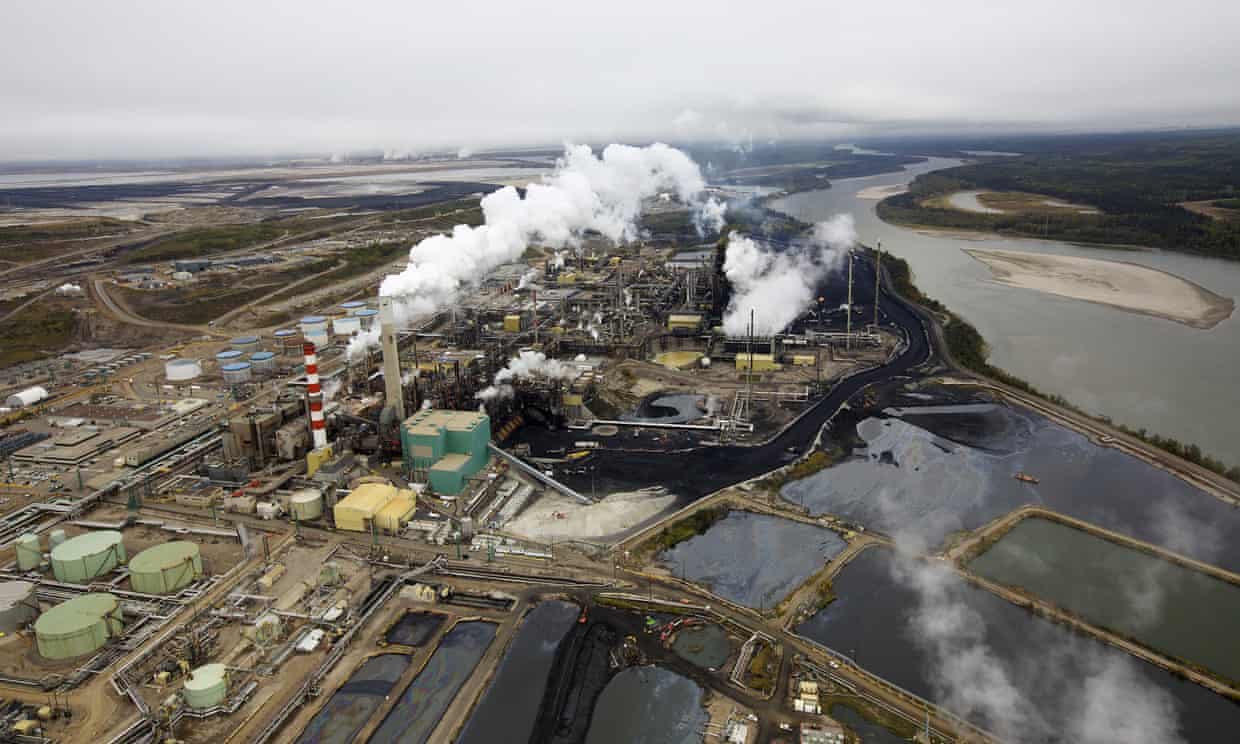
A tar sands plant in Alberta, Canada. The country was among those achieving minimal social gains but using resources at a level consistent with climate and ecological breakdown. Photograph: Todd Korol/Reuters
In the past 30 years, No country has managed to meet the basic social needs of its population without putting undue pressure on the Earth’s supply of natural resources, according to a study.
Looking at a sample of 148 nations, the University of Leeds found wealthy countries were putting the future of the planet at risk to make minimal gains in human welfare, while poor countries were living within ecological boundaries but underachieving in areas such as life expectancy and access to energy.
The report, which follows the conclusion of the Cop26 climate change talks in Glasgow, said the research was the first attempt to track nation-by-nation progress in achieving environmental and social goals, and that even wealthy countries seen as having good sustainability records – such as Germany and Norway – were using more than their fair share of the world’s resources.
The report, which was published in the journal Nature Sustainability, said wealthy countries, including the US, the UK and Canada were achieving minimal social gains despite using resources at a level that was consistent with climate and ecological breakdown.
Poorer countries such as Bangladesh, Malawi and Sri Lanka were living within planetary boundaries, but still falling short on meeting many basic human needs.
Tech billionaire Elon Musk, who has just been named TIME’s person of the year, has once again urged people to have more babies, claiming that “population collapse” is the biggest threat facing humanity.
Population Matters Communications Manager Olivia Nater explains why this statement is absurd and dangerous.
While billionaires may seek cheap labour and large markets
POPULATION GROWTH IS THE PROBLEM, and NOT THE DECLINE.
Because of claims like Musk’s and widespread media coverage about ‘baby busts’, many people now think that our population has stopped growing or has even begun to shrink. Musk needs to heed his own advice and look at the numbers. Although the population growth rate has been falling, we are still adding around 80 million people to our ranks every year – about the population of Germany. The UN’s population projections – considered to be the most authoritative – show that there is currently only a one-in-four chance of our population stabilising before the end of the century.
Whilst a few countries do now have naturally declining populations, among them Japan and parts of Eastern Europe, this is more than made up for by rapid growth in other areas. Importantly, many articles crying ‘baby bust’ and ‘population collapse’ are about countries (e.g. the US) that are still experiencing significant natural population increase (more births than deaths) – the opposite of what the headlines claim.
In addition, the challenges arising from population ageing and, eventually, falling numbers of people can be addressed with practical and available policy measures, as exemplified by Japan and analysed in depth in our recent report Silver Linings, not Silver Burdens.
While billionaires may seek cheap labour and large markets for what they sell, more rational and just economic systems do not depend on perpetual growth.
The Worst Possible News
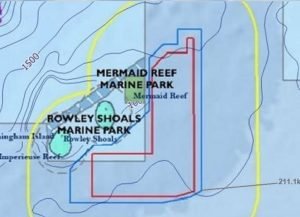
Red Line = Survey Area
Blue Line = Operations Area
Rowley Shoals Marine Reserve
to be Attacked by Sonic Blasts for 70 days of 24/7
We know the Rowley Shoals intimately having anchored and dove there for over a month of exploring the inner lagoon and fantastic dropoff into deep Indian Ocean. It is a precious part of Australia – far superior in underwater corals and marine life than anywhere else. But Searcher Seismic Pty Ltd is proposing to undertake the Possum three-dimensional (3D) marine seismic survey (MSS), located right next to Rowley Shoals in Commonwealth waters.
The Possum 3D MSS operational area is located 211 km west of Broome, and 246 km north-east of Port Hedland and about 180 km north of Eighty Mile Beach. The survey area is in close proximity to the Commonwealth Marine Reserve boundary of the Rowley Shoals Marine Park and Imperieuse Reef.
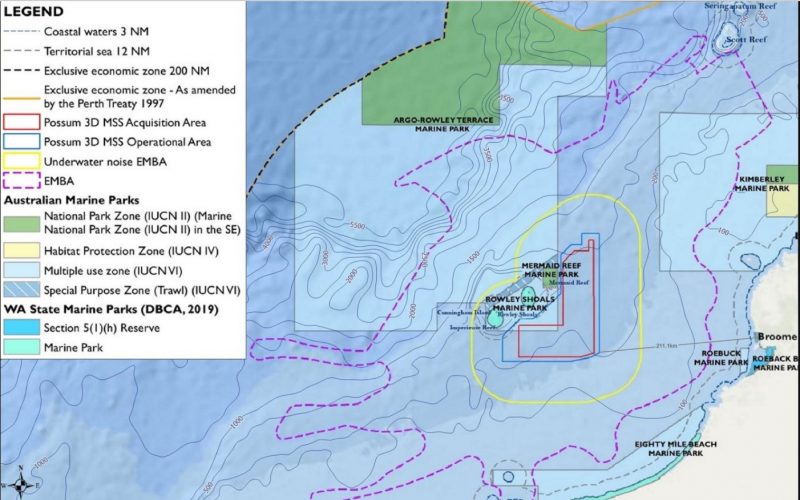
Looking for gas and oil, a marine seismic survey is a method of determining geological features below the sea floor, by sending sound waves into the rock layers beneath the sea floor and then recording the time is takes for each wave to bounce back as well as measuring the strength of each returning wave along a towed cable (“streamer”) of acoustic recorders. The sound wave is generated by the use of a seismic source which generates acoustic pulses by periodically discharging compressed air into the water column at regular intervals, as the vessel transits along acquisition lines within the ASA.
The Possum 3D MSS Environment Plan will request validity between 1 January 2022 and end July 2023. The acquisition window is expected to be between Dec and end April, but may extend to July with additional controls implemented. The maximum expected duration of the survey with contingency time is 70 days operating 24 hours a day.
Please Say NO to Seismic Blasting near Rowley Shoals
Billionaire Uses Massive Oil Spill to Avoid Paying Taxes for 14 Years
After the Deepwater Horizon offshore drilling rig exploded in 2010, environmentalists surveying the damage in the Gulf of Mexico came upon a mystery. The water had oil slicks that, because of the currents, couldn’t have originated from the site of the notorious accident.
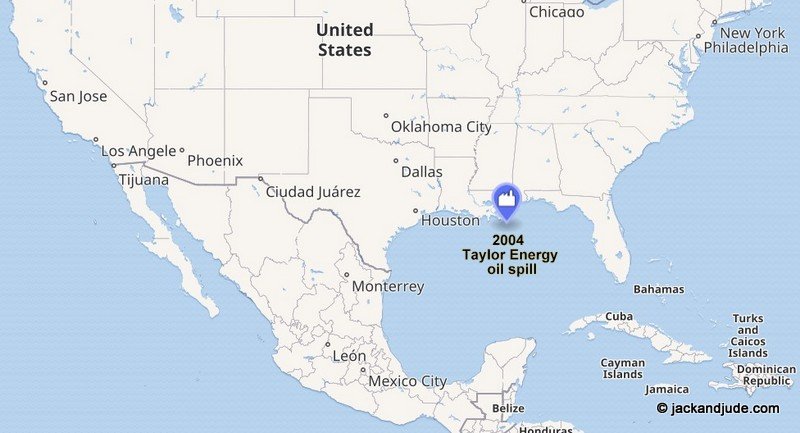
With the help of satellite imagery, they figured out that oil was leaking from a different spill, a six-year-old disaster the public knew almost nothing about. In September 2004, Hurricane Ivan had swept the legs out from under a 40-story oil-drilling platform operated by a company called Taylor Energy, causing a leak that continues to this day. It is the longest-running — and by one estimate, the largest — U.S. oil spill ever recorded.

Patrick & Phyllis Taylor
It’s been an environmental nightmare for the region — but a massive tax bonanza for Phyllis Taylor, the owner of Taylor Energy and the fallen rig.
According to ProPublica’s analysis of a secret trove of tax data, from 2005 to 2018, Taylor took in some $444 million in income, and didn’t pay a cent in federal income tax.
Taylor Energy operated out of an ornate four-story mansion in New Orleans, off Lee Circle, where a statue of Robert E. Lee stood until 2017. Female employees were not allowed to wear pants, and employees addressed their superiors as “sir” or “ma’am.” Patrick’s office had hand-painted blue-and-white silk wallpaper from a Russian palace, while a nearby dining room featured marble fountains from an 18th-century French chateau.
The year cyclone Ivan hit changed Phyllis Taylor’s life. A couple of months after the hurricane, her husband Patrick Taylor died at age 67. At 63, she took over the company.
Taylor Energy had ballooned in value in the 25 years since its founding. If Patrick Taylor, who controlled the vast majority of the company, had sold it while he was alive, the Taylors would have owed a huge sum in capital gains tax. But all of that value disappeared at death. There’s no estate tax for property transferred to a spouse.
Since Taylor was inheriting the company tax-free, she and her advisors had every reason to assign it a high initial value, because that would mean that when she later sold the assets, the high value would minimize or eliminate the gain on paper. Taylor’s tax records suggest that’s what happened.
In 2008, four years after Taylor Energy became aware of the spill, the company had yet to clean it up. Taylor decided she wanted out of the business. She sold all of the company’s oil rigs and other assets, except for the damaged rig. Taylor, who owned about 95% of the company, received close to $1.2 billion of the roughly $1.25 billion price tag. Taylor did not record a gain on the sale of her company. In fact, she was able to report a loss of $211 million.
A few months after the sale, the federal agency that oversees drilling in the Gulf negotiated an agreement that required the company to create a $666 million trust to cover the cost of the cleanup. That’s a lot of money — more than half of the proceeds from the company’s sale — but it came with a silver lining. Because Taylor Energy was set up as a sole proprietorship, its income and losses flowed through to Phyllis’ personal taxes. She could write off the costs of the cleanup against her own income.
In the years after it established the cleanup trust, Taylor Energy claimed that stopping the leak was technologically impossible. In 2012, the Coast Guard finally ordered Taylor to install a dome to contain the leak. According to the Coast Guard, Taylor Energy was “obstinate, difficult to deal with and verbally combative,” and preferred “to employ stall tactics.”
For more than a decade, Taylor Energy has launched a series of legal actions against the government to try to recoup at least a portion of the money in the trust or to end its cleanup obligations, saying it has done all that it could.
Today the oil is still flowing at a rate of about 1,000 gallons a day. A protective dome, finally installed by a contractor the Coast Guard hired after losing faith in Taylor, contains the leak.
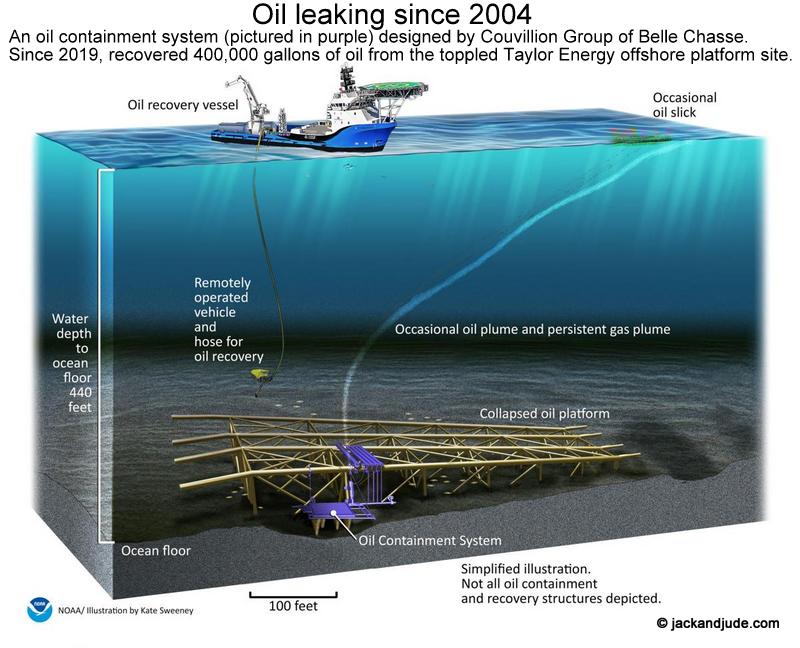
Ending the Coal Trade
Oh, Ye of Little Faith
26 Nov 2021 – I recently read a story by Tim Costello, a Baptist minister and one of Australia’s 100 national living treasures. It reminded me of the inspirational film Amazing Grace, which portrays the events leading to the enactment of the Slave Trade Act of 1807 abolishing slavery throughout the British Empire.
Tim’s article also reminded me that Prime Minister Scott Morrison, in his maiden speech as PM, mentioned William Wilberforce as one of his Christian heroes. Reading this made me wonder if Morrison realised that when Wilberforce started fighting for the abolition of the slave trade in 1789, slavery was far more economically crucial for the British Empire than coal is for Australia today.
Thinking about this, I remembered the most powerful argument against ending the slave trade was that although slavery was a terrible business, other nations would not cease the trade. France, Britain’s major competitor and her biggest threat, would economically benefit and the slave trade would continue its insatiable appetite. Only Britain would suffer economic hardship from the gesture.
To me, this all sounds rather familiar to today’s debate over Australia ending the export of coal.

“This is coal,” Scott Morrison said triumphantly,
“Don’t be afraid,” he said, soothingly, “don’t be scared.”
The analogy between these two very different events is that UK’s abolishment of slavery actually encouraged other nations to examine their ethos, which eventually lead to all nations finding alternatives to enslaving mortals for financial gain.
Jack and Jude think that if Australia took a hard stand against mining coal, a substance known to damage the Earth’s Climate, then other nations would examine alternatives to using coal – but that’s not how our Prime Minister thinks. Which is strange for a devout Christian. Who would think a person adoring God and the Creation would be so hell-bent on destroying it?
Why not leave coal in the ground until a future has processes to use it without destroying Earth’s atmosphere?
It might be even more valuable then?

Political Promises and Lies
19 Nov 2021 – Some politicians lead by inspiring their constituents to tackle hard to reach goals in sincere exhortations that are believable and stand up to inspection. Others choose to shout out spin containing lots of statements impossible to validate, dressed up with lots of “We’ll do it the Aussie Way.” But which actually ignores or contradicts the science of world experts.
Understandably, our youth are fed up with this. They are witnessing proof that Earth’s environment is under threat and want established practices changed. Thinking minds agree.
Sailors for several decades, Jack and Jude have intimate knowledge of the lungs of Earth. We know it as a magical presence of great beauty; inspiring dreams, love songs, and poetry. But it can also be a demon able to destroy man’s structures, change the course of rivers, and alter landforms. Encompassing all, protecting and nourishing, Earth’s environment has a multitude of intricate, interdependent systems continually in flux on a mind-boggling scale like the vast universe – while humanity acts as if the sorcerer’s apprentice with scant knowledge and powers little understood, dabbling and changing something that our lives depend upon.
Never in our history has all life been in the hands of elected officials. While most are fair, upright citizens of Earth, some are corrupt and greedy, and others have disturbing views of Nature. A few have egos on the edge of madness.
Let’s look at the recent outpourings from the Morrison Government. Namely, the new long-term strategy to cut greenhouse gas emissions.
The Glasgow climate summit ended early last Sunday morning, but before the clock had struck noon, the Morrison government had already backtracked, saying it would ignore one of its key outcomes.
Over 190 nations at the summit–including Australia–signed a pact requesting countries “revisit and strengthen” their 2030 targets to cut greenhouse gas emissions at next year’s climate summit in Egypt. In theory, countries would submit new “intended nationally determined contributions” (INDCs) outlining how much they intend to reduce emissions. Each submission would be more ambitious than the last in a process called ratcheting up.
A few hours later, the Morrison government said its target to cut emissions by 26% to 28% by 2030 was “fixed.” So, there will be no revision.
To push back against criticism over their reluctance to set a new 2030 target, both Prime Minister Scott Morrison and Emissions Reduction Minister Angus Taylor have instead held up projections of the country’s emissions.
During his speech to the summit, Morrison said—without qualification—that Australia’s emissions in 2030 would be 35% below 2005 levels.
But even if Australia did actually reduce emissions by this amount, would that align with the Paris temperature goals?
Does the government’s projection of a 35% emissions reduction “support the Paris agreement goals” as Taylor claims?
“Absolutely not,” says Bill Hare, the chief executive of Climate Analytics—a respected group that helps produce the global Climate Action Tracker.
Hare said: “Australia would need to make 60% or more reductions by 2030 to be in line with the Paris agreement and to be consistent with what the European Union and the UK are doing.
“And If all other countries followed a similar level of emissions reduction to Australia, then the world would warm by about 3C.”
“The IPCC (Intergovernmental Panel on Climate Change) has been very clear that based on objective science, by the time you get to 2.5C and 3C warming, we are facing catastrophic consequences for natural and human systems.”
Our last observation was watching the Emissions Reduction Minister gleefully boast that “Phase Down” instead “Phase Out” means Australia can get the shovels working on new coal mines, instead of putting our workforce and great minds to work discovering new technologies that reduce greenhouse gas emissions.
Yes, we know ours is one of the cleanest coals, but we have plenty available for what is absolutely necessary until we can develop new non-polluting sources of energy. And the present workforce will gradually retire, giving the new kids a chance to do something beautiful for Earth and her creatures. Meanwhile, our present government continues to blare out doomsday if we change anything. Jack and Jude believe it’ll be doomsday if we do not. Maybe we need new leaders?
A Glimmer of Hope
Three-quarters of Australians are concerned about climate change
13 Oct 2021 -As the federal Coalition negotiates a climate policy ahead of the Glasgow COP26 summit, a new report says the majority of Australians support a target to achieve net zero.
The majority support a transition through renewables, while only 12 percent support a gas-powered recovery.
In Queensland, confidence in coal dropped significantly compared to last year.
The latest Climate of the Nation report found 75 per cent of Australians are concerned about climate change. (Supplied: Australia Institute)
Are We Plain Stupid or Just Full of Ourselves?
Australia has lost one-third of its koalas in the past three years
/cloudfront-us-east-2.images.arcpublishing.com/reuters/WEZZDO3APRMKTCS4BVD5NIZQ3E.jpg)
An injured koala is treated at the Kangaroo Island Wildlife Park, at the Wildlife Emergency Response Centre in Parndana, Kangaroo Island, Australia January 19, 2020. REUTERS/Tracey Nearmy
MELBOURNE, 21 Sept 2021 (Reuters) – Australia has lost about 30% of its koalas over the past three years, hit by drought, bushfires and developers cutting down trees, the Australian Koala Foundation said, urging the government to do more to protect the creature’s habitat.
The independent non-profit group estimated the koala population has dropped to less than 58,000 this year from more than 80,000 in 2018, with the worst decline in the state of New South Wales, where the numbers have dropped by 41%.
There were no upward trends anywhere in Australia. Only one area in the study was estimated to have more than 5,000 koalas, and some regions were estimated to have as few as five or 10.
“The declines are quite dramatic,” said Australian Koala Foundation Chair Deborah Tabart on Tuesday.
Tabart said the country needs a koala protection law.
[More]
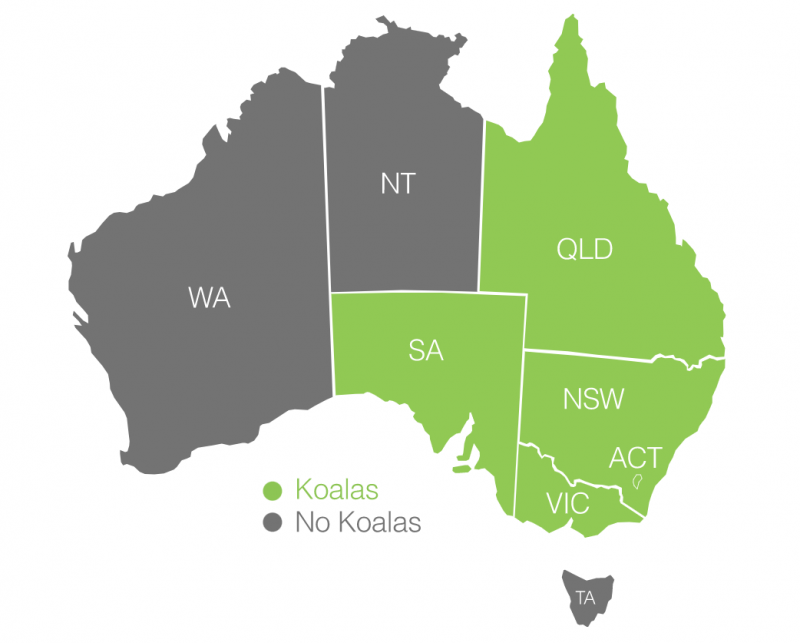
Glasgow climate talks
Will Australia try to BARGAIN ?
13 Nov 2021 – Australia has stated that China is the world’s largest polluter. But China’s status is new. Until 2006 it pumped out less per year than the United States. Because the US has had mega-factories and heating and so on for so much longer, it is responsible for by far the biggest chunk of the greenhouse gasses already in the atmosphere: 25 per cent, followed by the European Union with 22 per cent.
China might reasonably feel that countries like the US that have done the most to create the problem should do the most to fix it.
Like Australia, the US pumps out twice as much per person as China and has much more room to cut back.
Tasmanian Salmon is One Big Lie
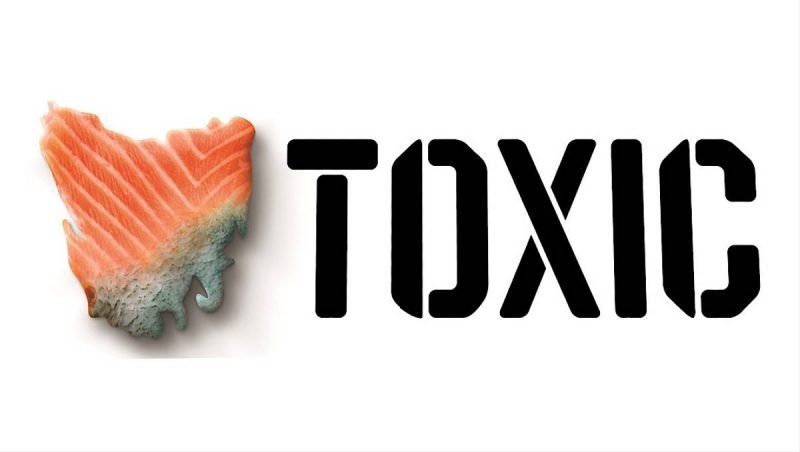 26 Apr 2021 – In a triumph of marketing, the Tasmanian salmon industry has for decades succeeded in presenting itself as world’s best practice and its product as healthy and clean, grown in environmentally pristine conditions.
26 Apr 2021 – In a triumph of marketing, the Tasmanian salmon industry has for decades succeeded in presenting itself as world’s best practice and its product as healthy and clean, grown in environmentally pristine conditions.
The documentary film Paradise Lost has been published in tandem with Flanagan’s latest book – Toxic: The Rotting Underbelly of the Tasmanian Salmon Industry. Together, they offer an alarming insight into the devastating environmental impact salmon farms are having on Tasmania’s once pristine waters, world heritage areas, and public health.
 This video clearly shows the devasting effect salmon farming is having on Tasmania waterways
This video clearly shows the devasting effect salmon farming is having on Tasmania waterways
“The reef is deteriorating
and the outlook has gone from poor to very poor.”
UN official rejects Australia’s claim it was told Great Barrier Reef wouldn’t be put on ‘in danger’ list.
23 Jun 2021
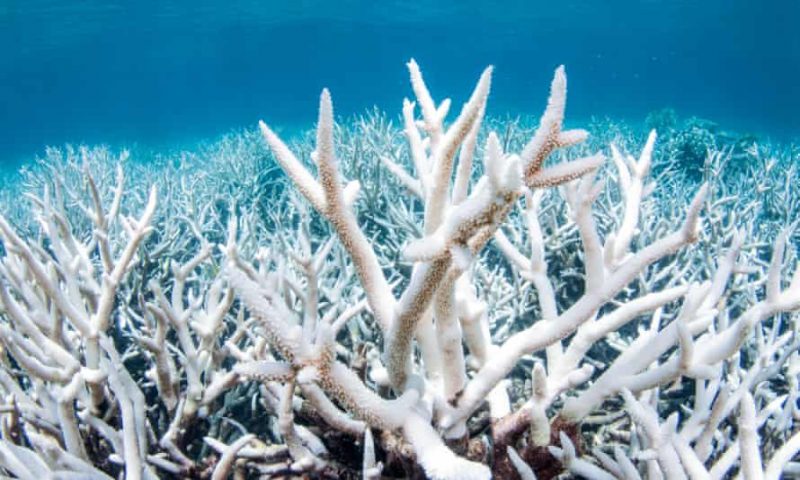
Unesco’s Fanny Douvere says the suggestion Australia was reassured about the Great Barrier Reef’s status was not true.
A senior Unesco official has rejected the Australian government’s claims it bowed to political pressure when deciding to recommend the Great Barrier Reef be placed on the world heritage “in danger” list.
Dr Fanny Douvere, of Unesco’s World Heritage Centre in Paris, also rejected a suggestion from the Australian environment minister, Sussan Ley, that the UN body had told the government a week ago it would not be recommending the listing.
Douvere said the United Nations Educational, Scientific and Cultural Organization (Unesco) had not provided – either formally or informally – any assurances to Australia before the decision was announced early on Tuesday.
“We don’t share [decisions] before they are finalised,” she told Guardian Australia. “That’s the simple truth.”
On Tuesday, Ley accused Unesco of a “complete subversion of normal process” and said the government would fight the recommendation, which is due to go before the World Heritage Committee next month.
“This decision was flawed and clearly there was politics behind it … for the World Heritage Committee not to foreshadow this listing is appalling,” Ley said.
Ley claimed her officials were “blindsided” by the announcement and had been assured only a week ago that the reef would not be slated for the “in danger” list.
Ley and the foreign minister, Marise Payne, called the Unesco director general, Audrey Azoulay, to make it “clear that we will contest this flawed approach,” the environment minister said.
Unesco recommends Great Barrier Reef world heritage site should be listed as ‘in danger’
Douvere, who leads the marine program at the centre, rejected outright that Unesco would have offered any indication of its decision that would have led the Australian government to be surprised or blindsided, as was claimed.
“No. There was no such recommendations made at any point,” she said from Paris.
“There is no doubt, based on the scientific information, that the Great Barrier Reef is in danger and it is important that the international community is aware of that. There is no process or procedure that requires us to share the content [of reports].”
Ley’s accusation that political pressure had been placed on Unesco to come to a decision, which in some media was said to be coming from China, was “not correct, at all,” Douvere said. [MORE]
Our population has become so large that the Earth cannot cope
1 Jun 2021 – There are now more than 7,900,000,000 people on planet Earth.
It took until the early 1800s for the world population to reach one billion. Now we add a billion every 12-15 years.
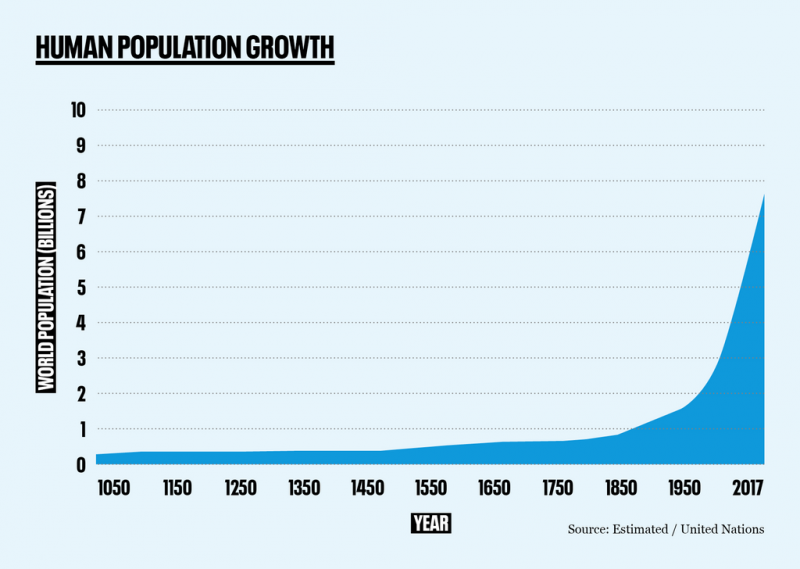
THE EARTH CANNOT PROVIDE FOR US ALL AND THE NATURAL WORLD IS PAYING THE PRICE
Biodiversity loss, climate change, pollution, deforestation, water and food shortage—these are all exacerbated by our huge and ever-increasing numbers. Our impact on the environment is a product of our consumption and our numbers. We must address both.
Seabirds are today’s canaries in the coal mine
and they’re sending us an urgent message
28 May 2021
THE AUTHORS:
David Schoeman, University of the Sunshine Coast; Brian Allan Hoover, Chapman University, and William Sydeman, University of California San Diego
Just as caged canaries once warned coal miners of the risk of carbon monoxide poisoning, free-flying seabirds are now warning humanity about the deteriorating health of our oceans.
Seabirds journey vast distances across Earth’s seascapes to find food and to breed. This exposes them to changes in ocean conditions, climate and food webs. This means their biology, particularly their breeding successes, can reveal these changes to us on a rare, planet-wide scale.
We collated and analysed the world’s largest database on seabird breeding. Our findings reveal a key message: urgency in the Northern Hemisphere and opportunity in the south.
The Northern Hemisphere ocean systems are degraded and urgently need better management and restoration. Damage to Southern Hemisphere oceans from threats such as climate change and industrial fishing is accelerating, but opportunities remain there to avoid the worst.
Oceans at a crossroads
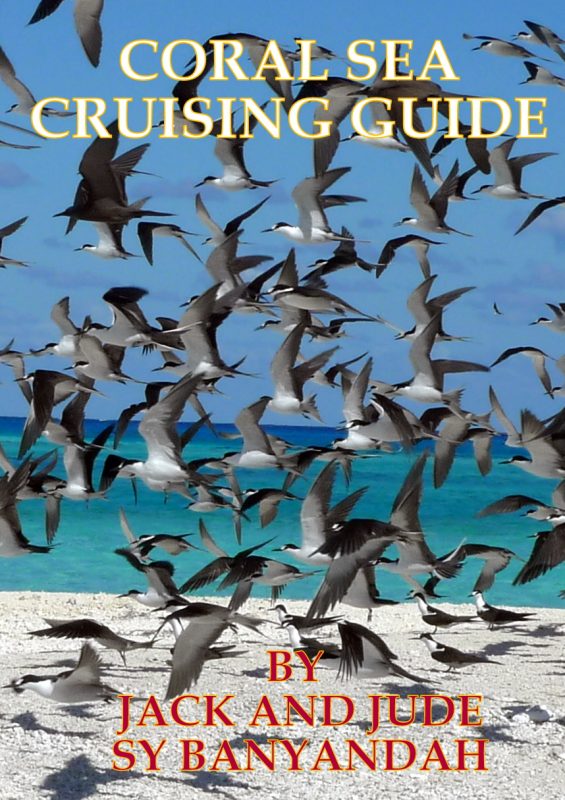 28 May 2021 – Seabirds often travel far across the planet. For example, many sooty shearwaters breed in New Zealand, yet travel each year to the productive waters of the northeast Pacific. Arctic terns migrate even further, travelling each year between the Arctic and Antarctic.
28 May 2021 – Seabirds often travel far across the planet. For example, many sooty shearwaters breed in New Zealand, yet travel each year to the productive waters of the northeast Pacific. Arctic terns migrate even further, travelling each year between the Arctic and Antarctic.
Scientists often use satellite-derived data sets to determine, for example, how the oceans’ surfaces are warming or how ocean food webs are changing. Few such data sets span the globe, however, and this is where seabirds come in.
Over its long journey, a seabird eats fish and plankton. In doing so, it absorbs signals about ocean conditions, including the effects of pollution, marine heatwaves, ocean warming and other ecological changes.
Seabird breeding productivity (the number of chicks produced per female per year) depends on the food resources available. In this way, seabirds are sentinels of change in marine ecosystems. They can tell us which parts of oceans are healthy enough to support their breeding and which parts may be in trouble.
[ READ MORE ]
Population Matters – Endgame 2050
“Conservation is an empty word if we continue our population growth”
4 Feb 2021 – One of many memorable quotes from doctor turned environmental filmmaker, Sofia Pineda Ochoa’s, ‘Endgame 2050’, which I’ve just watched ahead of Population Matters panel discussion next week with some of the luminaries interviewed. By luminaries, I mean those shining a clear light on the facts – a minority in the environment movement. [MORE]
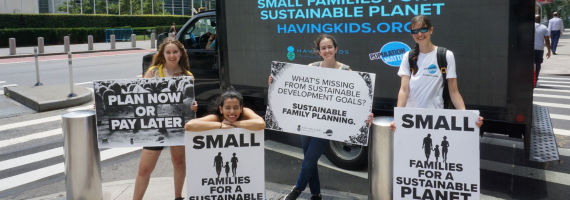
END OF 2021
[Return to Contents]
Suing for climate action:
Can the courts save us from the black hole of political inaction?
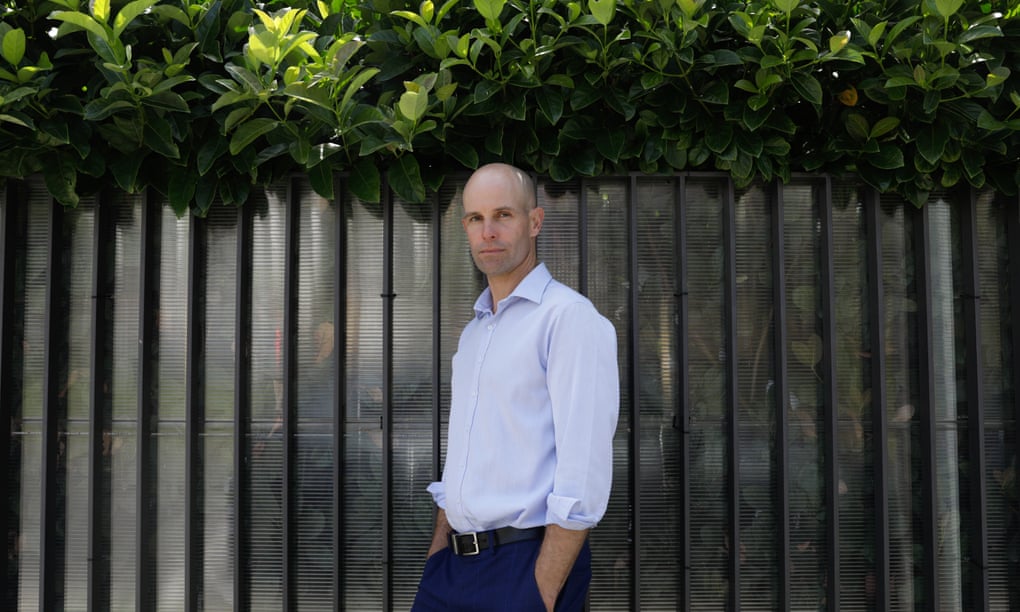
15 Nov 2020 – Climate litigator David Barnden had a landmark win this month against a major superannuation fund. He tells Guardian Australia he is just getting started.
The Great Barrier Reef Has Lost Half Its Corals
Researchers blamed climate change for the loss
14 Oct 2020 – The Great Barrier Reef, one of the earth’s most precious habitats, lost half of its coral populations in the last quarter-century, a decline that researchers in Australia said would continue unless drastic action is taken to mitigate the effects of climate change.
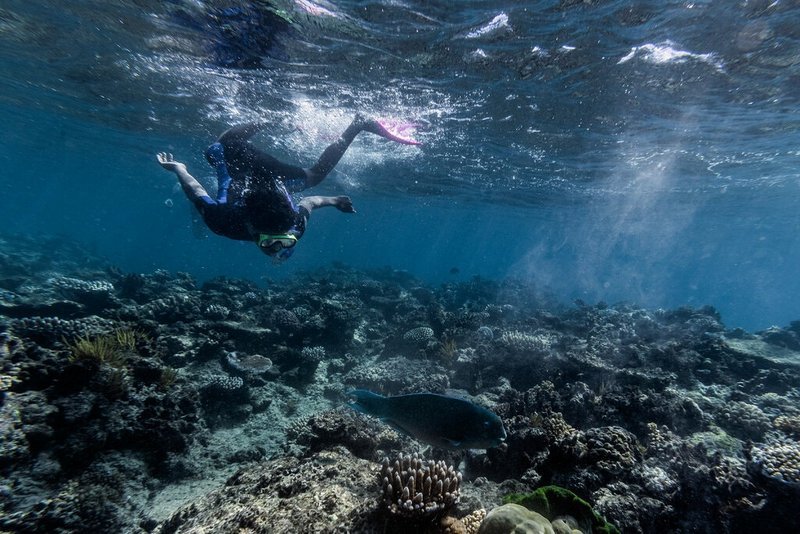
Researchers found almost every coral species had declined along the Great Barrier Reef in the last quarter-century.
Researchers studied coral colonies along the length of the reef between 1995 and 2017 and found that almost every coral species had declined.
Colony sizes were smaller; there were fewer “big mamas,” or older large corals that produce baby corals; and there were fewer of those babies, which are vital to the reef’s future ability to breed.
“Our results show the ability of the Great Barrier Reef to recover — its resilience — is compromised compared to the past, because there are fewer babies, and fewer large breeding adults,” Dr. Andy Dietzel, the lead author of the study, said in a statement. The study was published on Wednesday in the journal Proceedings of the Royal Society.
Net loss: the high price of salmon farming
15 Sep 2020 – The salmon is as magnificent an animal as anything on the Serengeti – beautiful in its many phases; thrilling in its athleticism; moving in its strength, determination and courage – and it would be a tragedy if it were to disappear. All that is true, but a more important point is that if the salmon does not survive, there is little hope for the survival of the planet.
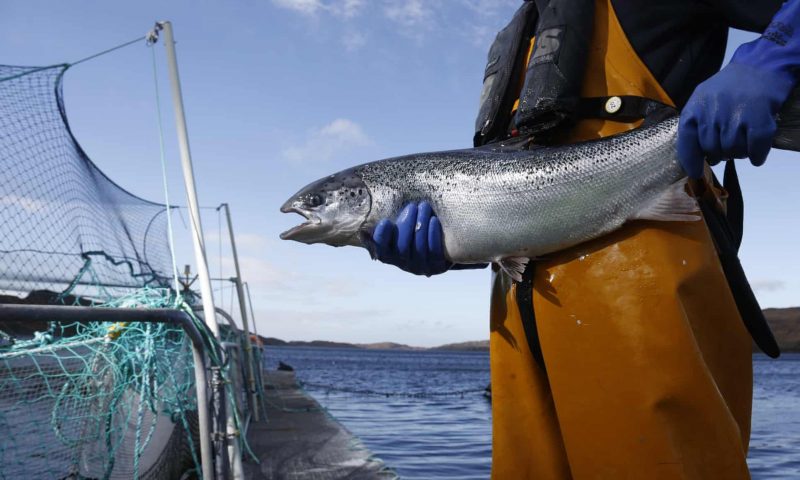
The salmon, though it belongs only to the northern hemisphere, has always been a kind of barometer for the planet’s health. That is because anadromous fish – fish that live part of their life in freshwater lakes and rivers and part of it in the sea – offer a clear connection between marine and terrestrial ecology. Most of what we do on land ends up impacting the ocean, but with salmon we are able to see that connection more clearly.
Our greatest assaults on the environment are visible in salmon. Complex as the problem of survival is for most fish, few species are faced with as many difficulties as salmon. This is partly because it is central to the “food web” (now that we understand the importance of biodiversity and the interdependence of species, this term has replaced the more familiar “food chain”) and partly because of a complicated life cycle that depends on both marine and inland habitat. In 2005, a group of scientists studying the survival prognosis for Pacific salmon concluded that 23% of all salmon stocks in the world were at moderate or high risk of complete extinction. For Atlantic salmon, the situation is even more desperate.
There is a growing realisation, greatly promoted by the United Nations Food and Agriculture Organization (FAO), that we have to start producing much more protein to sustain a growing world population. The FAO believes that we cannot afford to plough up more land for agriculture and we need to derive more protein from the sea. This is clearly not going to be accomplished with wild fish, already struggling under the effects of climate change. One way to make the sea productive is fish farming. But fish farming currently creates as many problems as it solves. Find out why – Read MORE HERE
Some Good News
A throng of new penguin colonies in Antarctica spotted from space
5 Aug 2020
Satellite images reveal guano patches, boosting known emperor penguin colonies by 20%
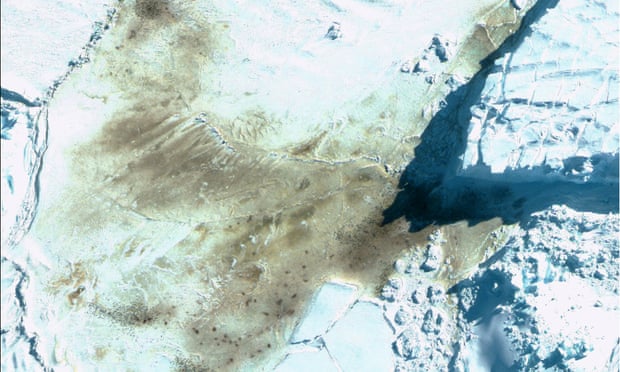
The discovery were made by spotting the distinctive red-brown guano patches the penguin leave on ice through satellite images. Photograph: British Antarctic Survey
Satellite images have also revealed 11 previously unknown emperor penguin colonies in Antarctica, boosting the number of known colonies of the imperilled birds by 20%.
The discoveries were made by spotting the distinctive red-brown guano patches the birds leave on the ice. The finds were made possible by higher-resolution images from a new satellite, as previous scans were unable to pick up smaller colonies.
[More good news here]
Aggressive seaweed threatens Hawaii’s remote reefs
The seaweed is producing mats as large as several football fields, killing everything found underneath.
7 July 2020

Algae has taken over huge areas of reefs near the Pearl and Hermes Atoll,
with seaweed nearly 20cm thick threatening fish and coral
[Jacob Asher/NOAA via AP Photo]
The algae easily breaks off and rolls across the ocean floor like tumbleweed, covering nearby reefs in thick vegetation that out-competes coral for space, sunlight and nutrients.
“This is a highly destructive seaweed with the potential to overgrow entire reefs,” said biologist Heather Spalding, a study co-author and longtime Hawaii algae researcher. “We need to figure out where it’s currently found, and what we can do to manage it.”
In 2016, government researchers were on a routine survey of Pearl and Hermes Atoll when they found small clumps of seaweed they had never seen before.
Last summer, they returned to find algae had taken over huge areas of the reef – in some areas covering “everything, as far as the eye could see” – with seaweed nearly eight inches (20cm) thick, said Spalding, who was among the divers there.
“Everything underneath of it was dead,” she told the Associated Press.
The Dead Sea of Tasmania
The ocean around southern Australia is a global heating hotspot
24 Feb 2020 – There are few places in the world where you can dive among giant kelp forests like those that used to flourish along the Tasmanian east coast. In California where Jack grew up diving amongst immense kelp beds, he found an amazing array of life amongst the towering giants. They provided food and refuge for so many creatures that a dive always provided a wondrous experience. Growing up to 40 metres from the ocean floor, the forests protected a vibrant ecosystem of sponge garden, fur seals, crayfish, weedy sea dragons and countless fish species.
In Tasmania, Mick Baron, a dive instructor and trained biologist at Hawknest on the Tasman Peninsula has watched the bull kelp disappear.
The forests started to die in the 1960s
Baron first noticed them vanishing from Deep Glen Bay, a short boat ride north-east of his dive centre at Eaglehawk Neck, in the late 1990s.
Nearly four times the global average – The HOT East Australian Current now runs along Tasmania’s east coast.
The sea along the Tasmanian east coast is a global heating hotspot. Temperatures there have risen at nearly four times the global average. They are about 2C hotter than a little over a century ago.
Warm water pushed down the coast by the east Australian current has stripped the area of nutrients, brought new marine species, and killed more than 95% of the giant kelp. The impact on local ecosystems and fisheries has been severe.
“Our whole ocean has effectively shifted to the south,” Baron says.
Small temperature increases have a great effect.
FISH FARM TRASH – Update
Open letter to Mr Mark Asman, Head of Aquaculture, Tassal Salmon Products
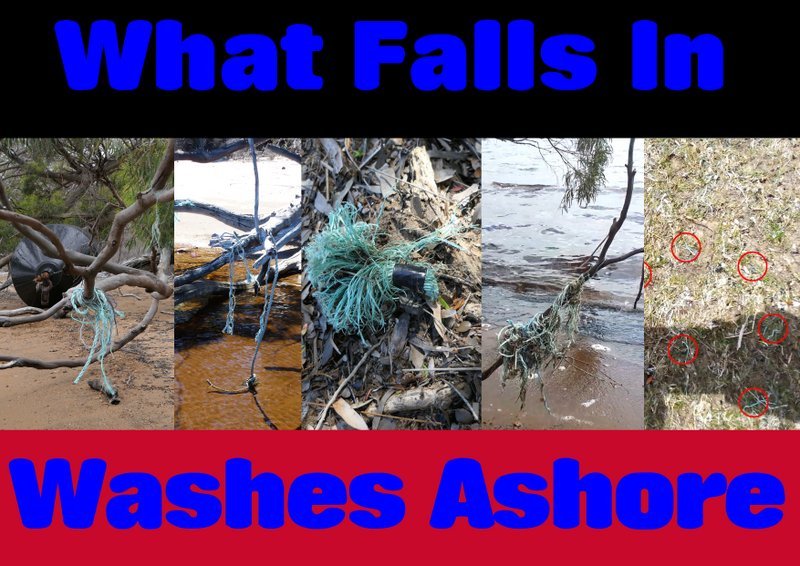
G’day Mark,
I am sure you were not pleased to see that we produced another video of the farm trash littering the shores of Macquarie Harbour. It saddened us to see that the plastic ropes are breaking down into strands and filaments that then degrade even faster into micro-plastic.
Against our best efforts to find a solution to this travesty, and the efforts by your team to reduce it, the truth is that day by day more farm trash finds its way to the shores of Macquarie Harbour.
Attached is an idea we’ve come up with that may encourage your team members to take extra care when handling plastic ropes in their day-to-day operations.
It’s a poster suitable for printing on A2 board, which we thought come be mounted wherever workers meet or relax.
Equinor pulls out of the Great Australian Bight
TERRIFIC NEWS ! 24 Feb 2020
Norwegian oil giant Equinor has announced it will abandon its plans to deep sea drill in the Great Australian Bight!
Thank you! This is entirely thanks to the thousands of Australians who have come together to defend our precious marine life and coastal communities.
Working with the Wilderness Society, Sea Shepherd and the Great Australian Bight Alliance, we’ve seen local communities, Traditional Owners and the Australian public come together to take on the oil giants and knock them off one by one.
Equinor is the fourth oil company to withdraw from the Bight in recent years, following the exit of BP, Chevron and Karoon Gas.
Drilling for oil is just too risky in the deep, wild and internationally significant waters of the Great Australian Bight – with the potential to devastate our marine life, local communities, fishing and tourism businesses.
Australian Coalition Government seems determined to destroy our land and waters –
Resources Minister Keith Pitt expressed disappointment at the decision.
“I know many will find Equinor’s decision not to proceed with this oil exploration project in the Great Australian Bight extremely disappointing, and it is particularly hard for South Australia,” Mr Pitt said.
[ SAVE EARTH NOW continued page 3]






